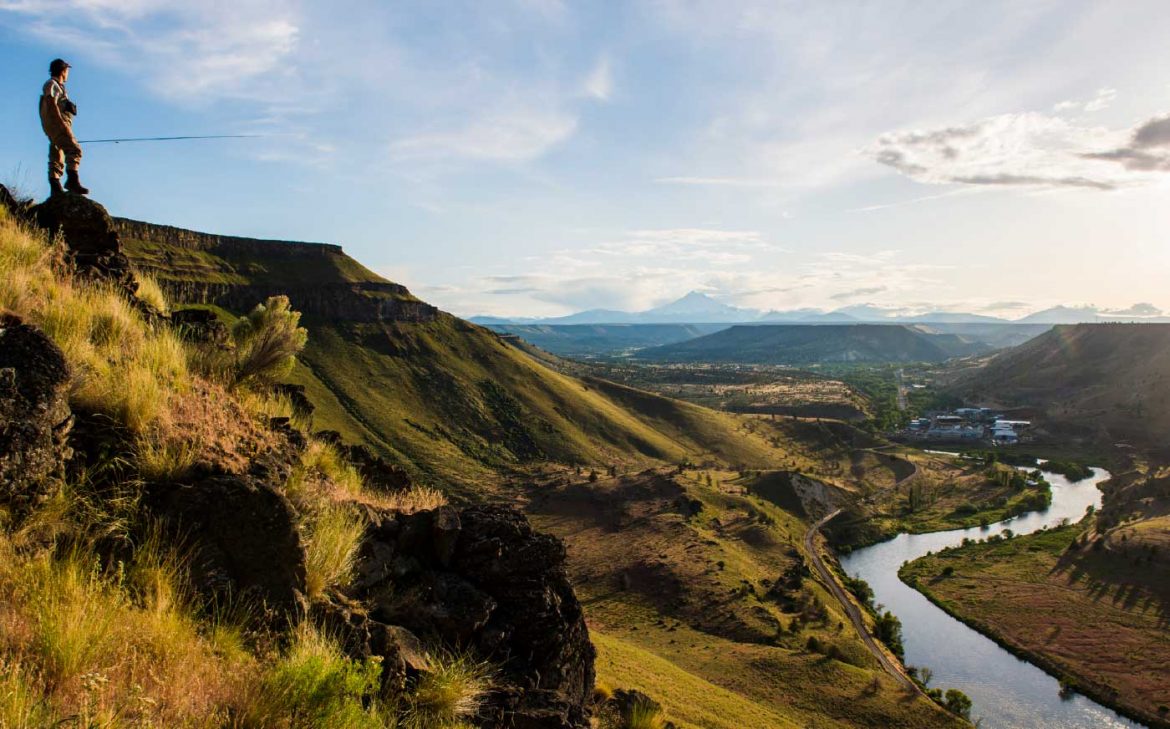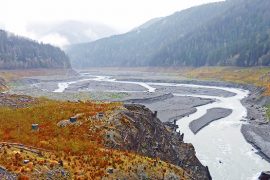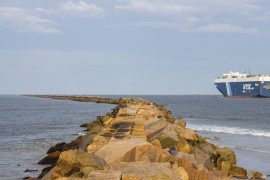
The river’s steelhead are struggling.
Tucker Jones is certainly comfortable speaking in front of a surly audience. This much is clear from the outset. The burly, self-deprecating Oregon Department of Fish and Wildlife biologist is standing in front of a group of 50 guides and anglers on a blustery spring evening at his agency’s office overlooking the Columbia River in The Dalles, Oregon. Jones and his colleague, Rod French, who manages ODFW’s Deschutes River fisheries program, are here as the bearers of bad news. Before they begin their presentation, a Tidewater Lines barge glides ominously past the picture windows opposite the lectern where Jones is just clearing his throat, as if to remind anglers that the river was re-made a half-century ago. It isn’t just for fish anymore. “Well, as most of you know,” Jones begins cordially, going for a yarn-around the campfire tone, “steelhead and salmon runs in the Columbia are in pretty bad shape this year. So we’re here to tell you about some management actions we have to take.”
It isn’t Jones’ nor any other fisheries manager’s fault, but wild salmon and steelhead in the Columbia Basin are on the verge of collapse. Spring chinook counts are at a deathly anemic six percent of the ten-year average, with just a few thousand fish counted so far. Dams and hatcheries shoulder much of the blame for a long, painfully slow decline, but the drop from not much to almost nothing comes on the heels of horrible out-migration conditions during the drought of 2015. The infamous “blob” in the northern Pacific that year is still taking its toll. What few fish survived the hot, unwelcoming river conditions on their way out to the ocean were greeted by utterly inhospitable saltwater once they reached it.
Anglers are all ears in The Dalles this evening, however, to hear about the deplorable condition of wild B-run steelhead in the Columbia Basin. B-runs are the unpoetic name fisheries biologists have given to steelhead that spend two years at sea instead of one. These fish, sometimes called “two-salt” steelhead, can obtain great size and power, and start arriving to their natal streams later in the year—generally mid-August—than their A-run counterparts, which typically start appearing in June. The latter tip the scales at a pedestrian four or five pounds; the former start at twice that. If a B-run fish has spent a third year in the ocean, it might weigh more than 20 pounds. Most B-runs in the Columbia are headed to Idaho’s Clearwater River, but they often stray up the Deschutes and other tribs looking for cooler water.
These autumn steelies have drawn fly-anglers to Columbia tributaries as reliably as elk descend into the rut around the same time of year. At least a million B-runs swam home every year before concrete transformed the Columbia into a series of lakes. But this year, the forecast for returns of these steelhead is a mere 1,100 fish for the entire Columbia…





